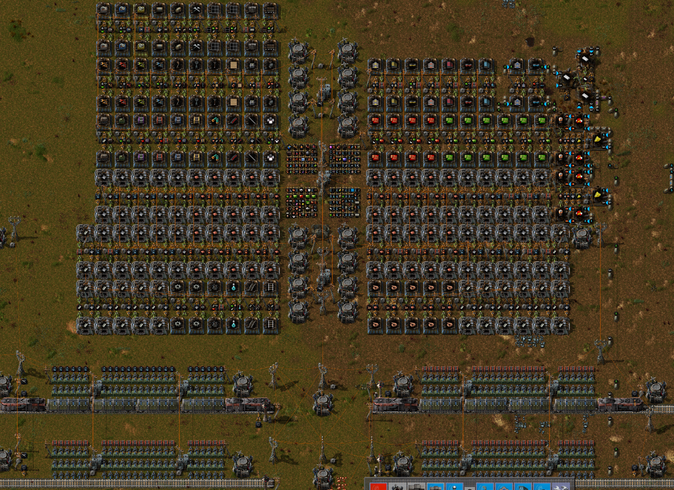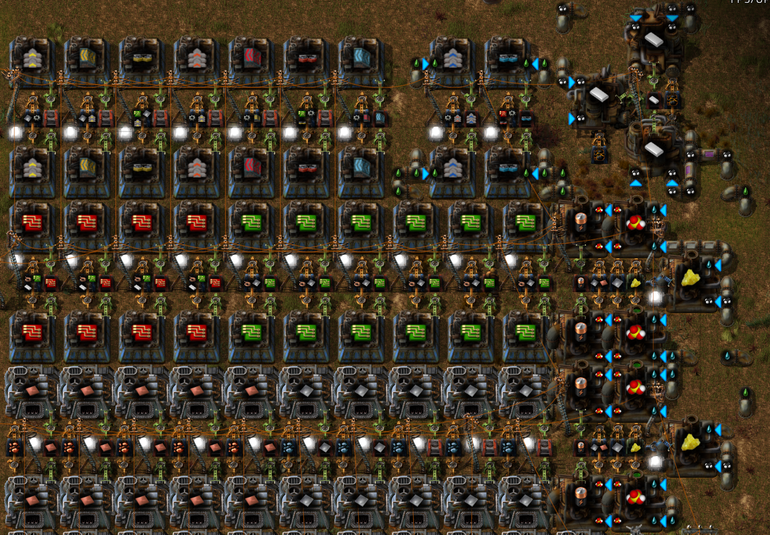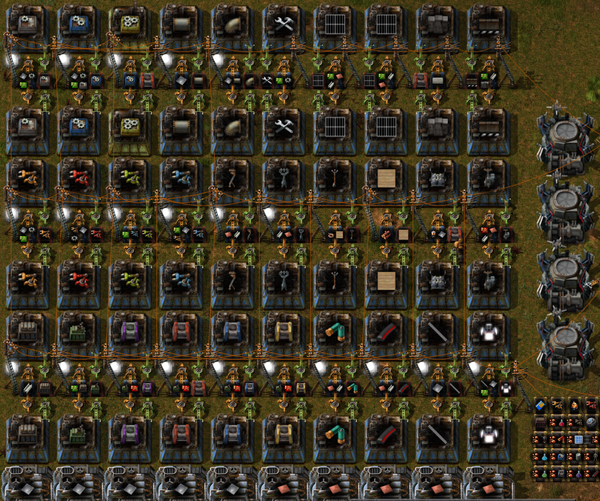ignore my actual thread, pissing contest is below
---> Big update on Page 2 (direct link to post). <---
So, I've started and restarted and re-restarted until I'm blue in the face and love this game, but this is the first time I'm actually building beyond automating the science packs. I guess that makes me a Factorio newbie.
I have a solar powered factory going in 0.12. After using belts to finish off 99% of the tech tree, I decided to rip it all up and rebuild in a way that uses no belts or minimal belts and do so being as compact as is reasonable without sacrificing too much throughput or production. This base should be making very nearly all the base products I use or will use on a regular basis to expand the power grid as needed and to craft components used to build other bases and outposts.
My focus on this build was being as compact as possible in that, without looking TOO ugly, to have as many tiles as possible used for something functional.
How did I do? What would you do differently?
This is my base blueprint. Rotated in different ways (and furnaces swapped out for factories), I built most of the base around this common blueprint:

This is the entire base, not including outposts or solar grids. Reworking oil production is on the to-do list. I haven't seen many super-compact high-volume oil builds so if anyone has any ideas, I'm all ears. Err, eyes. Err...
Full size: http://puu.sh/jgjI5/de24592a25.png
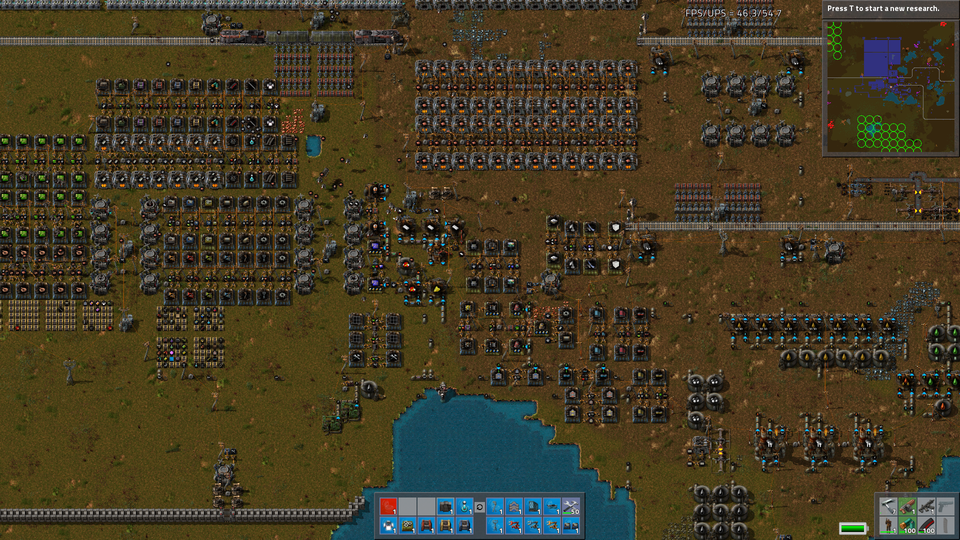
Now, you can't have a drone-operated base without DRONES right? Here's the little factory group I set up to make drones:
Full Size: http://puu.sh/jgjPs/c57b4db677.png
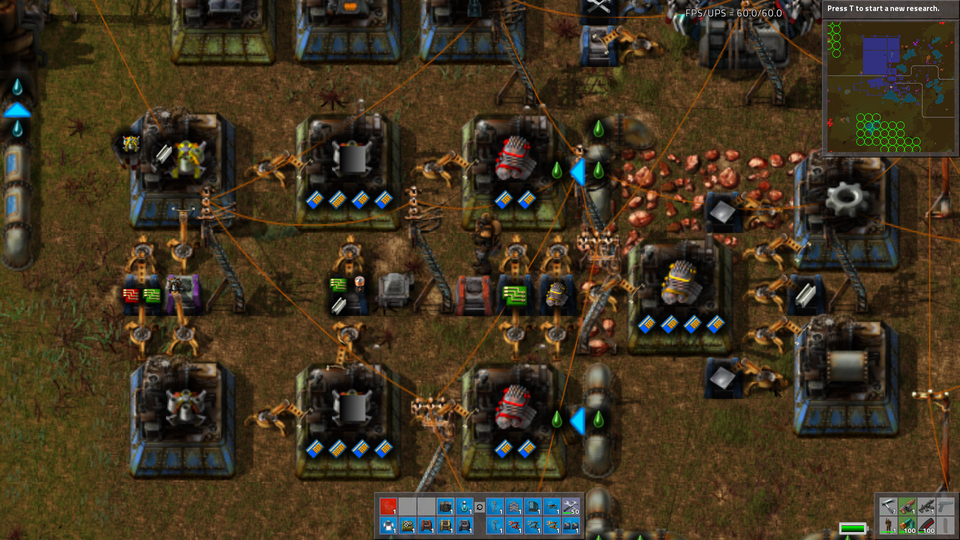
I have iron and copper coming in via 3 trains. I have no main train station yet or anything complicated but I'm beginning to incorporate trains. You can also see part of the solar blueprint that I'm pretty sure everybody already knows about. The grid of smelters at the top of the frame is iron plates while the grid at the bottom of the frame is copper plates.
Full size: http://puu.sh/jgjuk/861f95b744.png
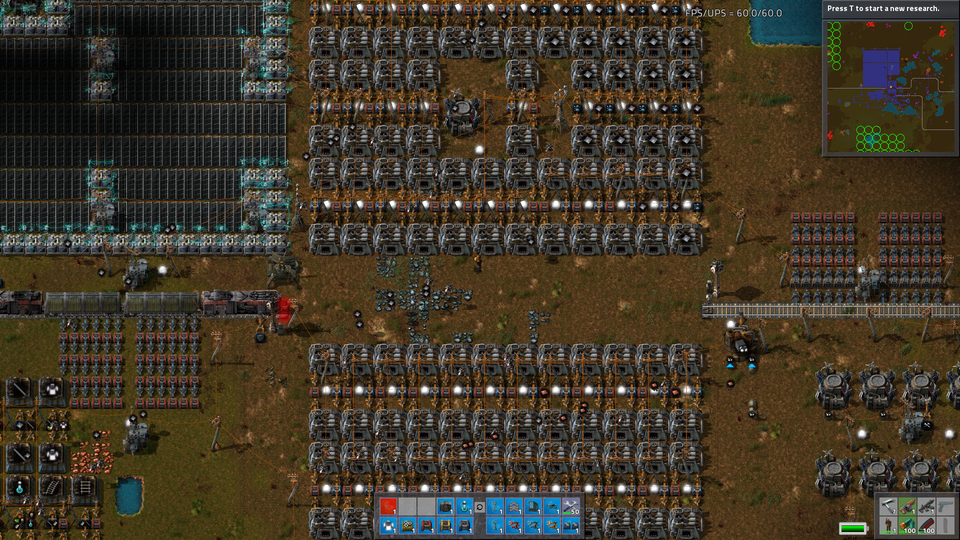
Here's steel, chests, roboports, turrets, ammo, and rails.
Full size: http://puu.sh/jgjwH/82145ad598.png

This is the center of my base, with 16 roboports for charging when I trigger all the factories working at once with robots flying everywhere. This base center manufactures a lot of the high-volume stuff I use so that robots making a lot of trips here with raw materials don't have to go very far no matter what direction they come from.
Full size: http://puu.sh/jgjzz/3f663543ed.png
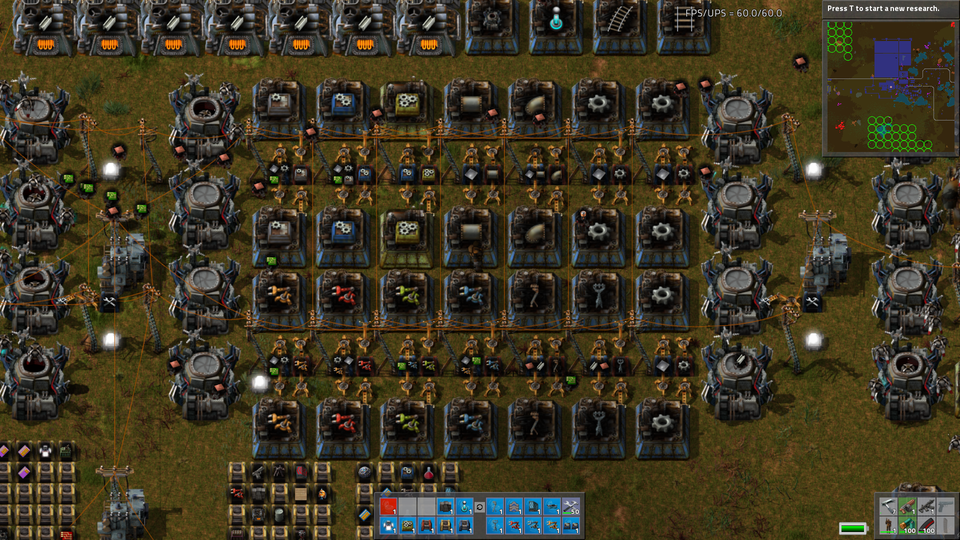
This is green/red circuit manufacturing. I haven't taken the time to figure out how many reds I consume per minute on average so I'm not sure if I have the appropriate number of red circuit factories, but I'll be able to judge that the more I use the base. Same goes for green circuits. I just kinda eyeballed it. Definitely on the to-do list.
Full size: http://puu.sh/jgjCu/c5f1e13291.png

Prioritized to-do list:
1) re-locate solar power to be out of the way
2) evaluate green/red circuit production needs per minute, tailor assembler count to suit
3) Quadrant-based, raw item interlaced grid for entire factory, one entirely compact centralized square
4) Convert to smart inserters into provider chests
5) Stagger inserter quantities to avoid over production
6) re-work oil refining area to be more compact and allow for greater volume processing
7) build more walls, even though defenses are already fine
So, I've started and restarted and re-restarted until I'm blue in the face and love this game, but this is the first time I'm actually building beyond automating the science packs. I guess that makes me a Factorio newbie.
I have a solar powered factory going in 0.12. After using belts to finish off 99% of the tech tree, I decided to rip it all up and rebuild in a way that uses no belts or minimal belts and do so being as compact as is reasonable without sacrificing too much throughput or production. This base should be making very nearly all the base products I use or will use on a regular basis to expand the power grid as needed and to craft components used to build other bases and outposts.
My focus on this build was being as compact as possible in that, without looking TOO ugly, to have as many tiles as possible used for something functional.
How did I do? What would you do differently?
This is my base blueprint. Rotated in different ways (and furnaces swapped out for factories), I built most of the base around this common blueprint:

This is the entire base, not including outposts or solar grids. Reworking oil production is on the to-do list. I haven't seen many super-compact high-volume oil builds so if anyone has any ideas, I'm all ears. Err, eyes. Err...
Full size: http://puu.sh/jgjI5/de24592a25.png

Now, you can't have a drone-operated base without DRONES right? Here's the little factory group I set up to make drones:
Full Size: http://puu.sh/jgjPs/c57b4db677.png

I have iron and copper coming in via 3 trains. I have no main train station yet or anything complicated but I'm beginning to incorporate trains. You can also see part of the solar blueprint that I'm pretty sure everybody already knows about. The grid of smelters at the top of the frame is iron plates while the grid at the bottom of the frame is copper plates.
Full size: http://puu.sh/jgjuk/861f95b744.png

Here's steel, chests, roboports, turrets, ammo, and rails.
Full size: http://puu.sh/jgjwH/82145ad598.png

This is the center of my base, with 16 roboports for charging when I trigger all the factories working at once with robots flying everywhere. This base center manufactures a lot of the high-volume stuff I use so that robots making a lot of trips here with raw materials don't have to go very far no matter what direction they come from.
Full size: http://puu.sh/jgjzz/3f663543ed.png

This is green/red circuit manufacturing. I haven't taken the time to figure out how many reds I consume per minute on average so I'm not sure if I have the appropriate number of red circuit factories, but I'll be able to judge that the more I use the base. Same goes for green circuits. I just kinda eyeballed it. Definitely on the to-do list.
Full size: http://puu.sh/jgjCu/c5f1e13291.png

Prioritized to-do list:
1) re-locate solar power to be out of the way
2) evaluate green/red circuit production needs per minute, tailor assembler count to suit
3) Quadrant-based, raw item interlaced grid for entire factory, one entirely compact centralized square
4) Convert to smart inserters into provider chests
5) Stagger inserter quantities to avoid over production
6) re-work oil refining area to be more compact and allow for greater volume processing
7) build more walls, even though defenses are already fine



